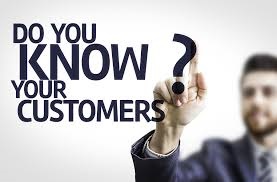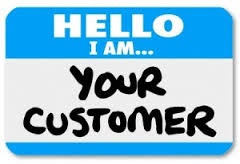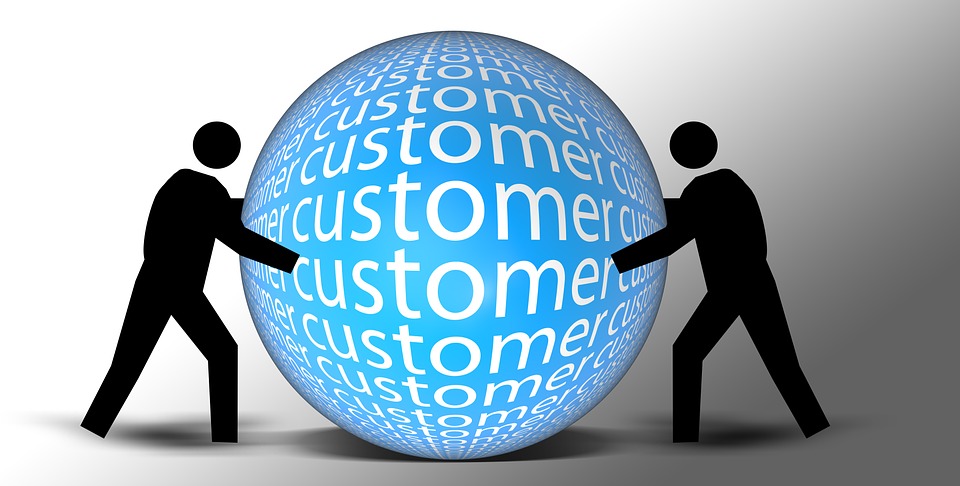As marketers, we’ve been taught to figure out how to get people to buy what we’re selling. Banner ads, retargeted Facebook ads, promotional emails, online offers and other hype have been the mixed bag of tricks. Eyeballs, impressions, CPA and conversions have long been the metrics and spray and pray was the method. In this model, the customer was a demographic – age, HHI, gender, geography – and our marketing strategy was to try to get them to do what we wanted.
 In this flood of marketing, we forgot that the person viewing that ad or reading that email is a human. They might be a mom trying to order Halloween costumes for the kids while cooking dinner and trying to get everyone to soccer and hockey (yes, that’s me) or one of my single friends trying a meal-delivery service for the first time or my dad figuring out how to share a document on the internet. These are all real people with real lives trying to do real stuff. As marketers, we need to stop thinking of “target audiences” and start thinking of customers as people.
In this flood of marketing, we forgot that the person viewing that ad or reading that email is a human. They might be a mom trying to order Halloween costumes for the kids while cooking dinner and trying to get everyone to soccer and hockey (yes, that’s me) or one of my single friends trying a meal-delivery service for the first time or my dad figuring out how to share a document on the internet. These are all real people with real lives trying to do real stuff. As marketers, we need to stop thinking of “target audiences” and start thinking of customers as people.
So, how do you build your customer-obsessed marketing strategy?
Personas
 In the early 2000s, I led a marketing team that was a mix of product, marketing and UX/XD. I knew nothing about user experience, had no clue who Alan Cooper or Steve Krug were and wondered what any of it had to do with marketing. Working with these incredibly talented people reshaped how I think about marketing today. One thing they taught me about was personas and how really understanding the person using your product makes for a better experience. If you don’t really understand your customer – beyond demographics – you can’t create a compelling experience. Building personas needs to start with data and defining who your customer is today and tomorrow. It help you drive focus around the key customers and will drive product, marketing, sales and engineering roadmaps. We start every client engagement with persona development. It will make your marketing spend and effort more efficient, and it will change the way you think about marketing and your customers.
In the early 2000s, I led a marketing team that was a mix of product, marketing and UX/XD. I knew nothing about user experience, had no clue who Alan Cooper or Steve Krug were and wondered what any of it had to do with marketing. Working with these incredibly talented people reshaped how I think about marketing today. One thing they taught me about was personas and how really understanding the person using your product makes for a better experience. If you don’t really understand your customer – beyond demographics – you can’t create a compelling experience. Building personas needs to start with data and defining who your customer is today and tomorrow. It help you drive focus around the key customers and will drive product, marketing, sales and engineering roadmaps. We start every client engagement with persona development. It will make your marketing spend and effort more efficient, and it will change the way you think about marketing and your customers.
Emotional Connections
 The power of your brand lies in your ability to create an emotional connection with the persona behind the screen or mobile device. This core piece of your brand value proposition is something most marketers fail to identify and create. It is what separates the good from the great. How is your brand connecting with me? How is it pulling at my heartstrings, making me feel something powerful? A great example of a brand figuring this out is Subaru. Car brands competing on price product features is a losing proposition. Subaru needed to find their place in the market. They decided to shift their brand to an important market segment – parents of new drivers. This reality scares the crap out of me as my 13 year old is already thinking about getting her license. These new drivers need one thing: safety. Subaru’s new “Love” campaign is all about what happens when something goes wrong when you’re driving. One of the videos I watched brought me to tears. They figured out selling on features, bells and whistles and shiny stuff wasn’t connecting to their consumer. Their new ad campaign is real, authentic, powerfully emotional and makes that emotional connection.
The power of your brand lies in your ability to create an emotional connection with the persona behind the screen or mobile device. This core piece of your brand value proposition is something most marketers fail to identify and create. It is what separates the good from the great. How is your brand connecting with me? How is it pulling at my heartstrings, making me feel something powerful? A great example of a brand figuring this out is Subaru. Car brands competing on price product features is a losing proposition. Subaru needed to find their place in the market. They decided to shift their brand to an important market segment – parents of new drivers. This reality scares the crap out of me as my 13 year old is already thinking about getting her license. These new drivers need one thing: safety. Subaru’s new “Love” campaign is all about what happens when something goes wrong when you’re driving. One of the videos I watched brought me to tears. They figured out selling on features, bells and whistles and shiny stuff wasn’t connecting to their consumer. Their new ad campaign is real, authentic, powerfully emotional and makes that emotional connection.
User-centered Marketing
I mentioned the team I worked with that taught me user-centered design thinking. I have coined the practice “user-centered marketing” and challenge you to create space in your strategy for this approach. User-centered marketing requires taking all the persona goodness we discussed above and thinking like your customer. Which channels do they interact with you on the most? What messages can you test to see what resonates? How can you better understand their behaviors and attitudes? Knowing your customers leads to better programs, interactions and experiences, which lead to customer satisfaction and engagement, which lead to holy grail – loyalty and love.
When I read this Ad Age article, I said to myself – finally, someone gets it. Victor Milligan says:
“The CMO’s agenda can be separated by a line of visibility: some pieces customers can see, and some they cannot. Key initiatives such as strategic positioning, brand and loyalty programs are traditional CMO agenda items. The new and most important item is designing consistent, high-quality, and personalized experiences across both human and digital touchpoints. The need to differentiate on the basis of experience is really what drives the deep-rooted operational changes below the visibility line.”
The traditional agenda of brand strategy, PR, advertising, communications, messaging remains in tact. But what C-level marketers should be charged with, and those of you hiring should be looking for, is someone who is customer obsessed and can inject the customer into the mix. Making that emotional connection can only be done authentically if you really know and understand the people using your product. Interestingly enough, I’m starting to see more CCO roles popping up – Chief Customer Officer – as the role of marketers evolves. Liza Landsman, CMO of E*TRADE Financial, recently left to join Jet as their CCO. It’s exciting to be part of this shifting marketing agenda and I am psyched to see that what I pioneered long ago, is making it’s way into the marketing C-suite today.
Are you ready to be customer-obsessed?


